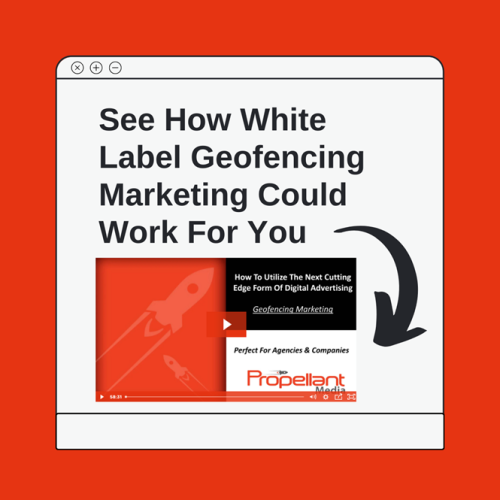Title: How to Use Geofencing Marketing to Increase Campus Visits and Student Applications
Introduction
As competition for student enrollment intensifies, higher education institutions must leverage every digital tool available to reach prospective students and drive campus engagement. One of the most underutilized but highly effective strategies in the higher education marketing mix is geofencing marketing. By targeting individuals based on their real-time location or past visits to relevant locations, universities can deliver highly personalized ads that drive measurable actions like campus visits, inquiries, and applications.
This article breaks down the power of geofencing marketing for colleges and universities, real-world strategies, and best practices to increase engagement and grow enrollment.
What is Geofencing Marketing?
Geofencing marketing uses GPS, Wi-Fi, radio-frequency identification (RFID), or cellular data to define a virtual boundary around a physical location. When a user enters or exits this “geofenced” area with their mobile device, they can be targeted with display ads, push notifications, or retargeting campaigns.
For universities, this capability creates direct marketing opportunities around key locations such as:
- High schools
- College fairs and recruitment events
- Testing centers (SAT/ACT)
- Competitor campuses
- Community colleges
- Shopping centers popular with teens and parents
Why Geofencing Works for Student Recruitment
1. Hyper-Targeted Audience Reach
Geofencing allows universities to deliver ads to students who physically visit locations tied to college exploration. These individuals represent a high-intent audience, more likely to engage with recruitment content.
2. Cost Efficiency
Unlike broad awareness campaigns, geofencing limits ad spend to specific, high-value audiences. This enhances cost efficiency and improves conversion rates.
3. Data Collection and Retargeting
Universities can capture device IDs of people who enter the geofence and retarget them later across multiple channels, keeping their brand top of mind as students make college decisions.
4. Influence Behavior During Critical Decision Windows
Running geofencing campaigns during application season or event periods allows universities to influence prospective students in moments that matter.
Geofencing Strategies That Increase Campus Visits and Applications
1. Target High Schools and Feeder Programs
Set up geofences around top high schools, magnet programs, or private academies. Serve ads promoting:
- Open house events
- Virtual campus tours
- Early application deadlines
Sample Ad Copy: “Your future is closer than you think. Explore [University Name]—join our upcoming open house.”
2. Geofence College Fairs, SAT/ACT Testing Sites, and Recruitment Events
Engage students already considering college by targeting:
- NACAC fairs
- SAT/ACT testing centers
- Community college transfer events
Follow up with retargeted ads promoting programs, financial aid, and next steps.
3. Competitor Campus Targeting
Use geofencing to target visits to competitor campuses during their campus tours or preview days. Deliver comparative messaging that highlights unique differentiators.
Example: “Looking for a better fit? See how [University Name] offers more pathways to success.”
4. Parent and Household Targeting
Many college decisions involve parents. Use household IP targeting in combination with geofencing to deliver messages that resonate with both students and their families.
Messaging Focus: Affordability, job placement, academic reputation.
5. Event-Specific Campaigns
Launch temporary geofences during:
- High school graduations
- Athletic tournaments
- Regional academic competitions
Tie messaging directly to the event to boost relevance and engagement.
Measuring Success: Geofencing KPIs for Higher Education
Primary Metrics:
- Cost per visit (walk-ins to campus)
- Impressions served within the geofence
- Click-through rate (CTR) on geofenced ads
- Conversion rate to inquiry form submissions
- Application starts and completions
Use foot traffic attribution tools to measure physical visits to campus post-campaign.
Benchmark: Geofencing CPL often falls between $250 – $350, but combined with retargeting, costs decrease while effectiveness rises.
Real-World Example:
Objective: Increase attendance for Fall Open House at a regional university
Tactics:
- Geofenced top 25 local high schools and SAT testing centers for 30 days pre-event
- Served mobile display ads promoting the open house with a direct RSVP link
- Layered retargeting to reinforce the message for 60 days
Results:
- 850 RSVPs generated
- 300+ students walked in with direct attribution to the campaign
- $280 cost per RSVP, below industry benchmarks
Best Practices for Higher Ed Geofencing Campaigns
1. Creative Relevance
Design ad creative specific to each geofenced location or event. Personalization drives higher CTRs.
2. Time Campaigns Around Enrollment Milestones
Align geofencing with key dates like application deadlines, open houses, and scholarship windows.
3. Combine with Retargeting
Capture device IDs for post-geofence retargeting across social, display, and video platforms.
4. Monitor and Optimize Performance
Track in real-time and optimize based on CTRs, engagement, and cost metrics.
Future of Geofencing in Higher Ed Marketing
1. Layered Data Targeting
Combine geofencing with behavioral and demographic targeting to refine audience segments further.
2. Dynamic Creative Optimization
Use AI to adjust ad creative based on the user’s location, time of day, or engagement history.
3. Expansion into Connected TV (CTV)
Serve video ads to devices in geofenced homes, expanding reach to family decision-makers.
Conclusion: Why Geofencing Must Be Part of Every University’s Recruitment Plan
Geofencing marketing allows universities to engage prospective students when they’re most receptive—physically present at locations tied to college planning. It provides measurable results, cost-efficient targeting, and significant influence over student behavior during critical decision-making periods.
Key Takeaways:
- Hyper-targeting increases engagement and reduces waste
- Effective for driving campus visits and event attendance
- Pairs powerfully with retargeting for full-funnel marketing
For higher education marketers looking to maximize their digital impact and enrollment growth, geofencing must be a core tactic.
Suggested Resources:
- Video: “Location-Based Marketing Strategies for Higher Education”
- Webinar: “Geofencing and Behavioral Targeting in Student Recruitment”
- Guide: “How to Measure Geofencing ROI for Universities”
For expert support in building a high-performing geofencing campaign, contact Propellant Media—your partner in driving student engagement and enrollment success.

